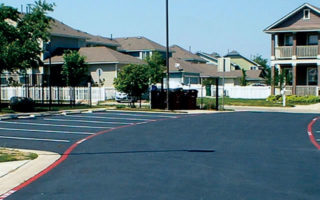Your ability to escape your home during a fire depends on advance warning from smoke alarms and advance planning
Fire can spread rapidly through your home, leaving you less than one or two minutes to escape safely after the smoke alarm sounds. A closed door may slow the spread of smoke, heat and fire. Install smoke alarms in every sleeping room and outside each separate bedroom. Install alarms on every degree of the house. Pull together everyone in your household and make a plan. Walk through your home and inspect all possible exits and escape routes. Households with children should consider drawing a floor plan of your house, marking two ways out of every room, including doors and windows.
scape planning tips
Pull together everyone in your household and make a plan. Walk through your home and inspect all possible exits and escape routes. Households with children should think about drawing a floor plan of your home, marking two ways out of every room, including doors and windows. Also, mark the location of every smoke alarm.
When you walk through your plan, check to ensure the escape routes are obvious and windows and doors can be opened easily.
Choose another meeting place (i.e. neighbor’s house, a light post, mailbox, or stop sign) a safe distance before your home where everyone can meet after they’ve escaped. Make sure to mark the positioning of the meeting place on your escape plan.
Go outside to see if your street number is plainly visible from the street. If not, paint it on the curb or install house numbers to ensure that responding emergency personnel can find your home.
Have everyone memorize the emergency phone number of the fire department. Like that any person in family members can call from a neighbor’s home or a mobile phone once safely outside.
If there are infants, older adults, or family members with mobility limitations, ensure that someone is assigned to assist them in the fire drill and in case of an emergency. Assign a backup person too, in the event the designee is not home through the emergency
If windows or doors at home have security bars, make sure that the bars have emergency release devices inside so that they can be opened immediately in an emergency. Emergency release devices won’t compromise your security – nonetheless they increase your likelihood of safely escaping a home fire.
Tell guests or visitors to your home about your family’s fire escape plan. When staying overnight at other people’s homes, ask about their escape plan. If indeed they don’t have an idea set up, offer to help them make one. That is especially important when children are permitted to attend “sleepovers” at friends’ homes.
Be fully prepared for a genuine fire: when a smoke alarm sounds, get out immediately. Residents of high-rise and apartment buildings (PDF) may be safer “defending set up.”
Once you’re out, stay out! For no reason if you ever go back into a burning building. If someone is missing, inform the fire department dispatcher when you call. Firefighters have the abilities and equipment to execute rescues. professional fire escape plan maker helps you identify routes through any buildings in the event of a fire or other emergency.
Put your intend to the test
Practice your home fire escape plan twice per annum, making the drill as realistic as is feasible.
Make arrangements in your plan for anyone in your house that has a disability.
Allow children to understand fire escape planning and practice before holding a fire drill at night when they are sleeping. The target is to apply, not to frighten, so telling children there will be a drill before each goes to bed is often as effective as a surprise drill.
It is important to determine during the drill whether children as well as others can readily waken to the sound of the smoke alarm. If indeed they fail to awaken, ensure that someone is assigned to wake them up within the drill and in a real emergency situation.
If your home has two floors, every family member (including children) must be able to escape from the next floor rooms. Escape ladders can be placed in or near windows to offer an additional escape route. Review the manufacturer’s instructions carefully so you’ll be able to use a safety ladder in an emergency. Practice establishing the ladder from a first floor window to make sure you can do it effectively and quickly. Children should only practice with a grown-up, and only from a first-story window. Store the ladder near the window, in an easy to get at location. You do not want to search for it throughout a fire.
Always choose the escape route that is safest – the main one with minimal amount of smoke and heat – but anticipate to escape under toxic smoke if necessary. When you do your fire drill, everyone in the family should practice getting low and going under the smoke to your exit.
Closing doors on the way out slows the spread of fire, providing you additional time to safely escape.
In some instances, smoke or fire may prevent you from exiting your home or apartment building. To get ready for a crisis like this, practice “sealing yourself set for safety” in your home fire escape plan. Close all doors between you and the fire. Use duct tape or towels to seal the entranceway cracks and cover air vents to keep smoke from coming in. When possible, open your windows at the very top and bottom so oxygen can enter. Call the fire department to report your exact location. Wave a flashlight or light-colored cloth at the window to let the fire department know what your location is located.




